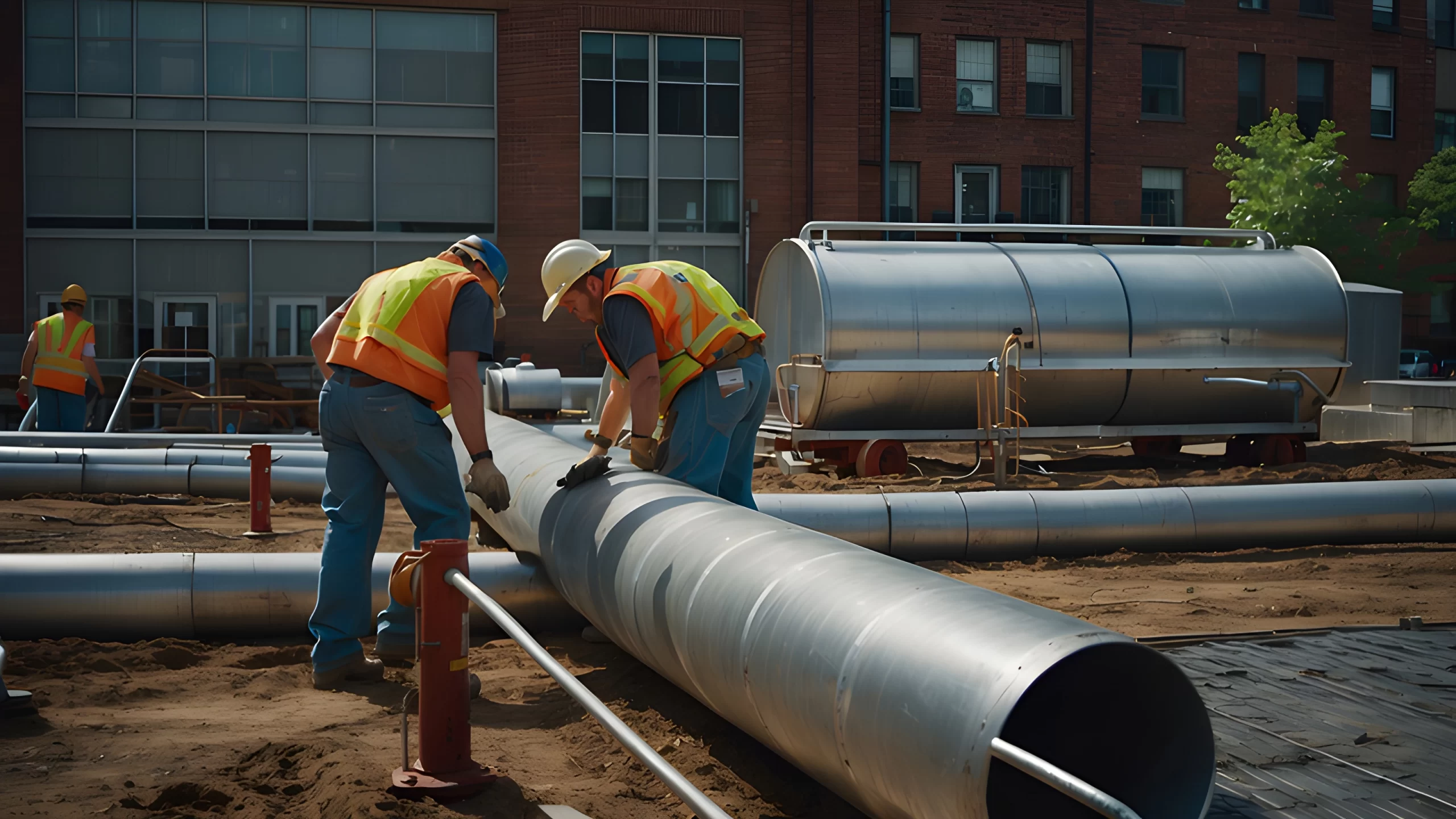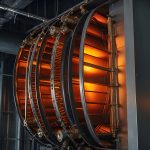
When I started working with commercial HVAC contractors back in 2015, I quickly realized that material selection can make or break a project timeline. As someone who’s been running HVAC Metals LLC for nearly a decade, I’ve seen firsthand how the right commercial ductwork installation materials can save contractors both time and headaches on the job site.
Essential Commercial Ductwork Installation Materials for Professional Projects
Let me share what I’ve learned about the core materials that keep commercial HVAC systems running efficiently. Over the years, we’ve supplied everything from small office buildings to massive industrial facilities across New Jersey, New York, and Pennsylvania, and these materials consistently deliver the best results.
Galvanized Steel: The Workhorse of Commercial Ductwork Installation Materials
If you’re working on commercial projects, galvanized steel is likely your go-to material, and for good reason. In my experience, it offers the perfect balance of durability, cost-effectiveness, and workability that contractors need. Furthermore, galvanized steel’s corrosion resistance makes it ideal for most commercial applications, especially in the humid conditions we often encounter in the tri-state area.
Just last month, we fabricated a complete ductwork system for a 50,000 square foot warehouse in Newark using 20-gauge galvanized steel. The contractor told me it was one of the smoothest installations he’d handled all year because the material held its shape perfectly during transport and installation.
When Aluminum and Stainless Steel Make Sense
While galvanized steel handles most jobs, certain applications demand specialized materials. For instance, I recommend aluminum when weight is a critical factor or when you’re dealing with coastal environments where salt air accelerates corrosion. Additionally, stainless steel becomes essential in food processing facilities, hospitals, or chemical plants where contamination concerns outweigh cost considerations.
Insulation Materials That Actually Perform
Here’s something that separates experienced contractors from newcomers: understanding that your commercial ductwork installation materials include more than just the metal components. Proper insulation materials can dramatically impact system efficiency and long-term performance.
Fiberglass vs. Fiberboard: Making the Right Choice
I’ve watched contractors struggle with this decision for years. Fiberglass duct board works exceptionally well for rectangular ductwork in commercial applications because it provides both structure and insulation in one product. However, when you need flexibility or are working in tight spaces, traditional sheet metal with external fiberglass insulation often proves more practical.
Last year, we helped a facility manager in Philadelphia retrofit an aging office building. By switching to properly insulated custom ductwork, they reduced their energy costs by 18% within the first six months. That’s the kind of real-world performance that keeps contractors coming back.
Flexible Ducting: The Problem-Solver
Every contractor I know keeps flexible ducting in their arsenal for those tight spaces and challenging connections. While it’s not suitable for main trunk lines, flexible ducting excels at connecting rigid systems to diffusers and handling vibration isolation.
The key is knowing when to use it and when to avoid it. I’ve seen too many installations where flex duct was overused, creating unnecessary pressure drops and reducing system efficiency.
Critical Components: Registers, Grilles, and Dampers
These finishing components often get overlooked during the planning phase, but they’re crucial commercial ductwork installation materials. Quality air registers and grilles ensure proper air distribution, while well-designed dampers allow for system balancing and zone control.
We stock a complete range of these components because contractors hate making multiple stops for materials. When you’re working on a tight deadline, having everything available from one reliable supplier makes all the difference.
Why Material Quality Impacts Your Bottom Line
I’ll be straight with you – not all commercial ductwork installation materials are created equal. In our sheet metal fabrication shop, we see the difference between premium materials and budget alternatives every day.
Cheap materials might save money upfront, but they often lead to callbacks, warranty issues, and damaged reputations. Moreover, when you’re dealing with commercial clients who expect long-term performance, cutting corners on materials rarely pays off.
The Supply Chain Reality
One challenge I consistently hear from contractors involves material availability and delivery timing. That’s why we’ve built relationships with multiple suppliers and maintain inventory levels that support our customers’ project schedules. We offer deliveries as early as 6 AM because we understand that timing is everything in commercial construction.
Just last week, a contractor called us Friday afternoon with an emergency need for custom ductwork on a hospital project. By Monday morning, we had fabricated and delivered everything they needed to keep the project on schedule.
Best Practices for Material Selection
After years of working with contractors across the tri-state area, I’ve developed a systematic approach to selecting commercial ductwork installation materials:
- Assess the environment: Consider factors like humidity, temperature extremes, and chemical exposure
- Calculate total system costs: Include material, labor, and long-term maintenance expenses
- Plan for accessibility: Choose materials that facilitate future maintenance and modifications
- Consider local codes: Ensure all materials meet or exceed local building requirements
The bottom line is this: successful commercial HVAC installations depend on using the right materials for each specific application. Whether you need reliable steel fabrication or specialized components, working with an experienced supplier who understands your challenges makes the difference between a smooth project and a stressful one.
FAQs
What’s the most cost-effective material for large commercial ductwork installations?
Galvanized steel typically offers the best value for most commercial applications, providing excellent durability and corrosion resistance at a reasonable cost. However, the specific environment and application requirements should always guide your final decision.
How do I determine the right insulation material for my commercial project?
Consider factors like space constraints, fire ratings, moisture conditions, and acoustic requirements. Fiberglass duct board works well for rectangular systems, while external insulation on sheet metal provides more flexibility for complex layouts.
Can I mix different materials in the same ductwork system?
Yes, it’s common to use different materials throughout a system based on specific requirements. For example, you might use galvanized steel for main trunks, aluminum for coastal areas, and flexible ducting for final connections to diffusers.
Written by: Arthur
HVAC Metals, LLC




